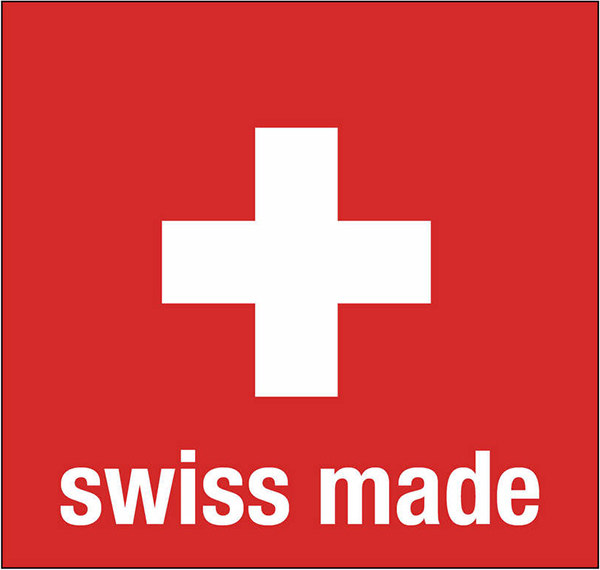
A piece of news that went under the radar recently was the revision of the percentage associated with the legal definition of the words “Swiss Made” on watches. The Swiss National Council approved by way of a 124 against 67 majority vote that the minimum share of Swiss value for industrial products has been raised to 60%, up from about 50%.
Now this is news that the watch industry will be perking their ears up for, especially for watch producers whose products lie on the margins of the old percentage figure of 50%.
If you’ve been into watches for a while, it will not take you long to realize that “Swiss Made” on a watch dial commands a premium over a similar watch without this marking. In the world of watch companies, there is certainly an economic incentive for being seen to produce Swiss Made watches. Watch buyers typically see Swiss watches as inherently better, and this is tied into tradition as well as the tremendous amount of marketing that the Swiss watch industry has done to reinforce and maintain this image.
After all, there are a large number of watch companies started with foreign money, who have had to open a facility in Switzerland to attain “Swiss Made” status, before being taken seriously by watch buyers.
Rightly or not, it is difficult to say whether a Swiss watch is better due to the numerous arguments that can be made on either side. The world is very different from what it was 50 years ago when economies were more local, and when the origin of a product could be more easily traced. Now we live in an age where talent, materials, and money flow through porous economic borders, and the difficulty comes in deciding where the country of origin is and when it can change due to your definition of it.
The luminal space where emotion ends and where business begins is perhaps what this law aims to make concrete. Lots of economic interest rides on it, both for the Swiss and for foreign watch companies wanting to get a piece of the “Swiss Made” action by routing some of their production through Switzerland. Basically, it is a protective measure on behalf of the more “Swiss Made” brands to push out or reduce the relevancy of the less “Swiss Made” brands.
What then is a Swiss Made watch? According the official website of the Federation of the Swiss Watch Industry (FH) , a watch is considered Swiss, according to Swiss law if, 1) its movement is Swiss and, 2) its movement is cased up in Switzerland and; 3) the manufacturer carries out the final inspection in Switzerland.
The definition of a Swiss movement is tied into rule 1) as above, and states that: A watch movement is considered Swiss if 1) the movement has been assembled in Switzerland and 2) the movement has been inspected by the manufacturer in Switzerland and 3) the components of Swiss manufacture account for at least 50 percent of the total value, without taking into account the cost of assembly.
Reading these definitions, it is easy to come up with scenarios to see how the system can be gamed in order to produce a “Swiss Made” watch. It is funny when a Swiss movement, say an ETA or Unitas, is assembled outside of Switzerland, then brought back in to have the final screw turned and the movement cased up. At that point, the other parts of the watch such as the strap, case, crystal and dial, can be of foreign origin. It then begs the question, where does the “Swissness” begin and where does it end?
One of the more surprising things that’s been said is with the old rule of 50%, the fact is that a watch that is Swiss Made can also, by extension, mean that the same watch can be labelled “Asian Made”. This alone can dilute the value of “Swiss Made”, and thus the new 60% rule attempts to address this criticism by defining a larger percentage of the watch’s value.
I don’t know what to make of this if I’m honest, as I have admittedly been brainwashed as well. In purchasing decisions, I have used the “Swiss Made” criteria and have attached a premium to that label, even though I know of the somewhat slippery definitions involved.
Still, what I can say is that in my conversations with watch collectors, this label is starting to lose its luster especially when considering how many new independent watchmakers are starting out outside of Switzerland and seeing success despite initial concerns of not having “Swiss Made” on the dial. Savvy watch buyers will know all this, and will know what they are buying, and the “Swiss Made” label will be but an increasingly smaller part of the purchasing decision, eclipsed by other factors such as the intrinsic parts of the watch itself.
That being said, I expect that members of the 500 strong Federation of the Swiss Watch Industry FH, made up of small to medium manufacturers, will welcome this move. Watch manufacturers who have reason to, will have to tighten up their game in order to met the new 60% rule. This would involve either using more Swiss sourced components and/or more Swiss labour in their production. Either way, Swiss economic interest is protected and rightly so.
In the larger scheme of things and at least for the foreseeable future, the “Swiss Made” label will retain its value, mostly because for the vast majority of the watch buying public, the label does resonate and does denote a premium that people are willing to pay for. Also, for a rival to Switzerland as a luxury watch producing powerhouse to exist will require extensive efforts which quite frankly seems near impossible at the present moment.
Whatever the case may be, take note, the new boundary line is now 60%!
